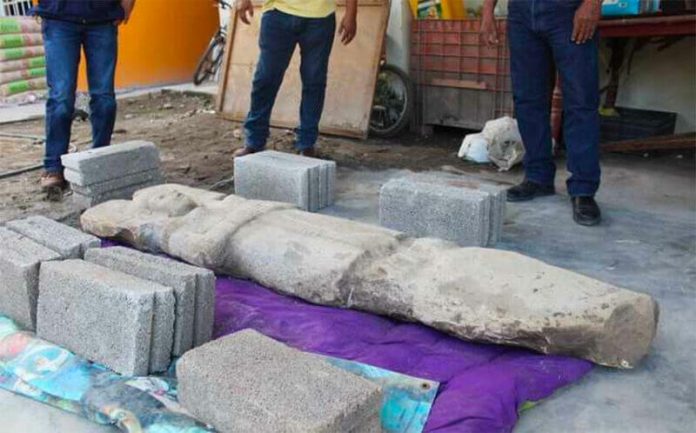A Mexico City statue of Christopher Columbus will be replaced with a replica of a pre-Hispanic sculpture of an unknown indigenous woman that was discovered in a Veracruz field in January.
The Columbus statue was removed from its plinth on Mexico City’s Reforma Avenue in October 2020, purportedly for cleaning, amid threats it would be knocked down. It was later announced it would be relocated to a new home in Parque América, a park in the affluent Polanco district.
The new effigy, a replica of “The Young Woman of Amajac,” named after the village where she was found buried in the Huasteca region of Veracruz, will be as much as three times the size of the two-meter original, which is being displayed in Mexico City’s Museum of Anthropology.
The statue dates from the late postclassical period, between 1450 and 1521. Its presence will differ markedly in style to neo-classical statues of indigenous people which have previously featured on Reforma Avenue, the Associated Press reported. “The Young Woman of Amajac” will stand on Columbus’ original base, which is of that neo-classical European style.
Speaking about the mystery of who the the young woman of Amajac represented, a field inspection officer at the National Institute of History and Anthropology (INAH) said she was more likely to have been a political figure than an ancient goddess of fertility, as was earlier speculated.
“Contrary to what one might think, it does not represent a goddess but a ruler …” said María Eugenia Maldonado. “We know these characters were representing ruling people or people of the hierarchy with political rank including women. So, in that sense, I think it’s the representation of a young woman of high-ranking character.”
Mexico City Mayor Claudia Sheinbaum announced in September that a statue of an Olmec woman would replace the Columbus sculpture. The sculptor chosen to create the effigy, Pedro Reyes, had already named his would-be design Tlalli, meaning Earth, world or land in Náhuatl. It is unclear if Reyes is still involved in the process, or if Tlalli will come to be.
The decision to replace the Columbus statue has caused controversy. A petition on change.org to return the explorer’s likeness to his plinth has gained over 33,000 signatures.
However, INAH director Diego Prieto Hernández said its relocation was an attempt to protect the effigy. “This was based, not on any ideological judgement of the (Columbus) character … if it had been left in place, it would have been the target of threats and protests,” he said.
